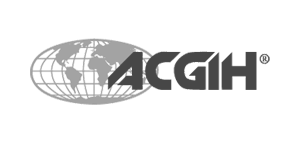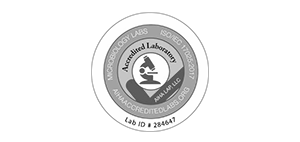
How to Check for Mold Behind Walls and Why It’s Important
If you’re a homeowner, it’s crucial to keep an eye out for mold growth in your house, including behind walls. Mold can cause health problems and structural damage if left untreated, so it’s important to be proactive in detection and prevention. In this section, we’ll explore the signs of mold behind walls, the risks associated with hidden mold growth, prevention methods, and how to detect mold in your home.
Key Takeaways:
- Mold behind walls can cause health problems and structural damage.
- Visual cues, musty odors, and physical symptoms can indicate the presence of mold.
- Hidden mold growth can impact indoor air quality and cause health implications.
- Detecting mold behind walls involves visual inspection, moisture meters, and thermal imaging.
- Preventing mold growth involves moisture control, proper ventilation, and regular maintenance.
Signs of Mold in Walls
If you suspect mold growth in your home, it’s crucial to understand the signs that indicate mold growth behind walls. The following are the most common signs of mold infestation:
- Discoloration or Stains: One of the most apparent signs of mold growth is the presence of discoloration or stains on walls. Mold stains can have different colors, including black, green, brown, or white.
- Musty Odors: Mold often produces a musty or earthy smell that lingers in the air. If you notice a musty odor that persists even after cleaning, it’s likely a sign of mold growth.
- Physical Symptoms: Mold can cause physical symptoms in some people, including nasal congestion, coughing, sneezing, and skin irritation. If you experience these symptoms but cannot find an apparent cause, mold may be behind the walls.
If you notice any of these signs of mold growth, it’s best to take action immediately to prevent further damage and ensure your safety.
Risks of Mold Behind Walls
If left unchecked, mold growth behind walls can pose serious risks to your health and home. Mold spores can spread quickly through your HVAC system and contaminate the air you breathe, leading to respiratory issues and other health problems. In addition, prolonged exposure to mold can weaken the structural integrity of your walls and compromise the safety of your home.
Hidden mold growth is particularly concerning as it can go unnoticed for months or even years. By the time you begin to see visible signs of mold, the problem may have already spread extensively behind the walls. This is why it’s important to inspect your home regularly for signs of mold growth.
Detecting mold behind walls
Identifying mold growth behind your walls can be challenging, but it is important to catch it early before it causes significant damage to your health and home. Here are some methods you can use to detect mold behind walls:
Visual Inspection: Look for signs of mold on your walls, such as discoloration or staining. If you notice any unusual growth on the walls, it could be mold.
Moisture Meters: Moisture meters help to detect the presence of moisture in walls, which is a favorable environment for mold to grow. These tools can be purchased or rented from home improvement stores.
Thermal Imaging: Thermal imaging cameras can detect temperature changes in walls, indicating the presence of moisture and potential mold growth.
It is important to note that if you are not confident in your ability to identify mold growth, it is best to seek the help of a professional mold inspector.
Removing mold in walls
If you have detected mold growth behind your walls, it is essential to take immediate action to remove it. While there are DIY methods for removing mold, it is recommended to hire a professional mold remediation company to ensure effective and safe removal.
Professional mold remediation experts have the necessary equipment, knowledge, and experience to handle mold growth in walls effectively. They can identify the root cause of the mold growth and eliminate it to prevent future recurrence.
DIY methods for removing mold include using a mold-killing solution, such as bleach or vinegar, and scrubbing the affected area with a brush. However, this method may not be effective in eliminating all mold spores, and it may even spread the spores further if not done correctly.
Whether you choose to use DIY methods or professional mold remediation, it is essential to take proper safety precautions during the removal process. Wear protective gear such as gloves, goggles, and masks to avoid exposure to mold spores.
After removing the mold, it is crucial to fix the root cause of the issue, such as a leaking pipe or poor ventilation, to prevent future mold growth. Regularly inspecting and maintaining your home can also help prevent mold growth in walls.
To sum up, removing mold in walls requires immediate action and proper techniques. Whether you choose DIY methods or professional mold remediation, always prioritize safety and address the root cause of the mold growth to prevent future recurrence.
Preventing mold in walls
If you want to prevent mold growth in your walls, there are several steps you can take. First, it is important to control moisture levels in your home. This means fixing any leaks as soon as they occur, using exhaust fans in high-moisture areas like bathrooms and kitchens, and ensuring that your HVAC system is properly maintained to prevent condensation.
Proper ventilation is also crucial in preventing mold growth. Make sure that your home has adequate ventilation in the attic, crawl space, and other enclosed areas. You can also use a dehumidifier to reduce humidity levels and prevent mold from growing.
Regular maintenance is another key component of mold prevention. This includes cleaning and inspecting your HVAC system, regularly checking for leaks or water damage, and promptly repairing any issues that arise. Be sure to also regularly clean areas prone to moisture, such as showers and sinks.
Additionally, consider using mold-resistant products in areas that are prone to mold growth, such as bathrooms and kitchens. These products can help inhibit mold growth and prevent it from taking hold in your walls.
By following these preventative measures, you can minimize the risk of mold growth behind your walls and ensure a healthy living environment for you and your family.
The dangers of black mold behind walls
Black mold, also known as Stachybotrys chartarum, can be particularly dangerous if it is present in your home behind walls. This type of mold releases mycotoxins, which can cause a range of health problems if inhaled or ingested.
The symptoms of black mold exposure can range from mild to severe and may include respiratory issues, headaches, fatigue, skin irritation, and even neurological symptoms. Those with allergies, asthma, weakened immune systems, or pre-existing health conditions may be more prone to severe reactions.
If you suspect that black mold is present in your home behind walls, it is important to take action immediately. While small amounts of mold can be removed with DIY methods, black mold requires professional assistance. Certified mold remediation experts have the necessary equipment and training to safely remove the mold and restore your home to a safe, healthy environment.
Keep in mind that attempts to remove black mold yourself can be dangerous, as improper handling and removal can spread the spores and cause further contamination. It is best to seek the advice of a professional and avoid the potential health risks associated with black mold exposure.
Mold remediation and professional assistance
If you have detected mold behind your walls, it is crucial to take action quickly to avoid the potential health risks and structural damage associated with mold growth. While there are DIY methods for removing mold from walls, it is essential to seek professional help in some cases.
Professional mold remediation experts are certified and experienced in identifying, containing, and safely removing mold from affected areas. They use specialized equipment and techniques to ensure that the mold is thoroughly eliminated while preventing it from spreading to other areas of the home.
It is also important to note that if you or anyone in your household is experiencing symptoms related to mold exposure, such as respiratory issues or allergic reactions, it is best to seek medical attention and professional mold remediation services.
By hiring experts in mold remediation, you can ensure that the mold is completely removed from your walls, and the risk of future mold growth is minimized. Professional mold remediation services can also provide you with information and resources to prevent mold from returning in the future.
Remember, if you suspect mold behind your walls, don’t hesitate to seek professional help. Your health and safety are worth the investment in mold remediation services.
FAQ
Q: How do you check for mold behind walls?
A: Checking for mold behind walls is important for maintaining a healthy home environment. Signs to look out for include musty odors, visual cues such as discoloration or staining, and any physical symptoms that may be experienced. Methods for detection include visual inspection, the use of moisture meters, and thermal imaging.
Q: What are the signs of mold in walls?
A: Signs of mold in walls can include visible mold growth, musty odors, and physical symptoms like allergic reactions or respiratory issues. Recognizing these signs is crucial for taking appropriate action to address the mold issue and prevent further spread.
Q: What are the risks of mold behind walls?
A: Mold growth behind walls poses various risks and dangers. It can negatively impact indoor air quality, leading to respiratory problems and allergies. Furthermore, mold can cause structural damage to walls and other surfaces if left unchecked. Regular inspection and remediation are essential to mitigate these risks.
Q: How do you detect mold behind walls?
A: Detecting mold behind walls requires thorough inspection. This can be done through visual examination for visible mold growth, the use of moisture meters to identify areas of high humidity, and thermal imaging to detect temperature variations that may indicate hidden mold. Identifying mold growth early is key to addressing it effectively.
Q: How do you remove mold in walls?
A: Removing mold from walls involves several steps. It is recommended to hire professional mold remediation experts to ensure thorough and safe removal. DIY methods should only be attempted for small areas. Safety precautions such as wearing protective gear and using proper cleaning solutions are essential during the removal process.
Q: How can you prevent mold in walls?
A: Preventing mold growth in walls requires proactive measures. Key strategies include controlling moisture levels in your home, ensuring proper ventilation, and conducting regular maintenance to address any water leaks or moisture issues promptly. By implementing these preventive measures, you can minimize the risk of mold behind your walls.
Q: What are the dangers of black mold behind walls?
A: Black mold behind walls can pose significant health risks. Exposure to black mold spores can lead to respiratory problems, allergic reactions, and even more severe health conditions in susceptible individuals. If black mold is detected, it is crucial to take immediate action and, in some cases, seek professional help for remediation.
Q: When should you seek mold remediation and professional assistance?
A: Professional mold remediation is necessary when dealing with large or extensive mold growth, especially if it involves black mold or if individuals in the household have pre-existing health conditions. Certified mold remediation experts have the knowledge and tools to effectively remove mold, restore air quality, and prevent future growth.
Order your mold detective device today at My Mold Detective. Contact 404-844-4200 for help.







